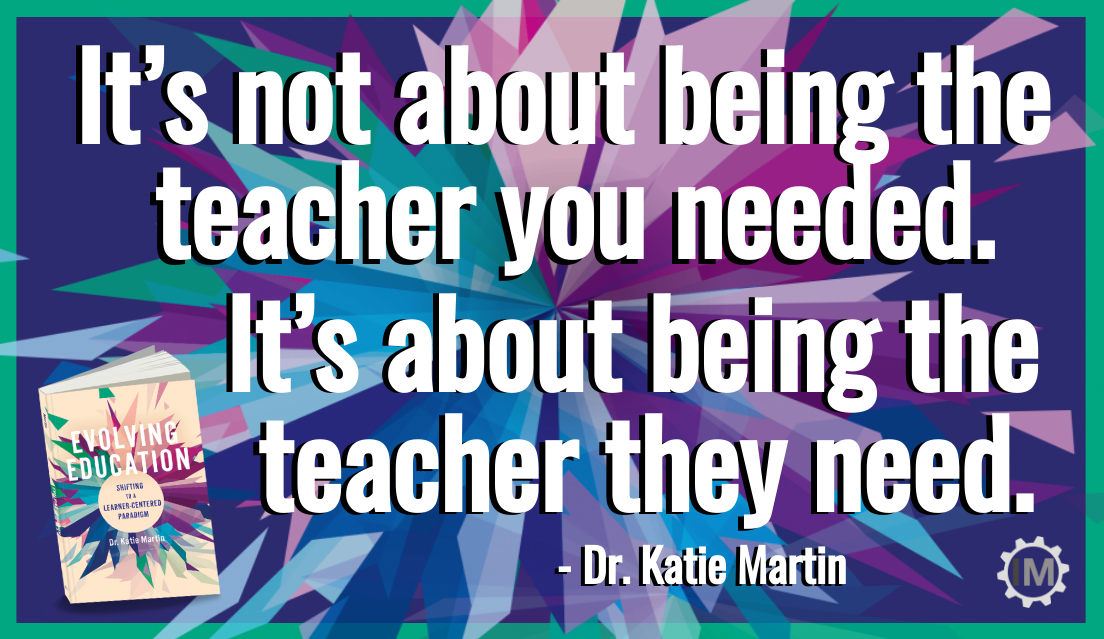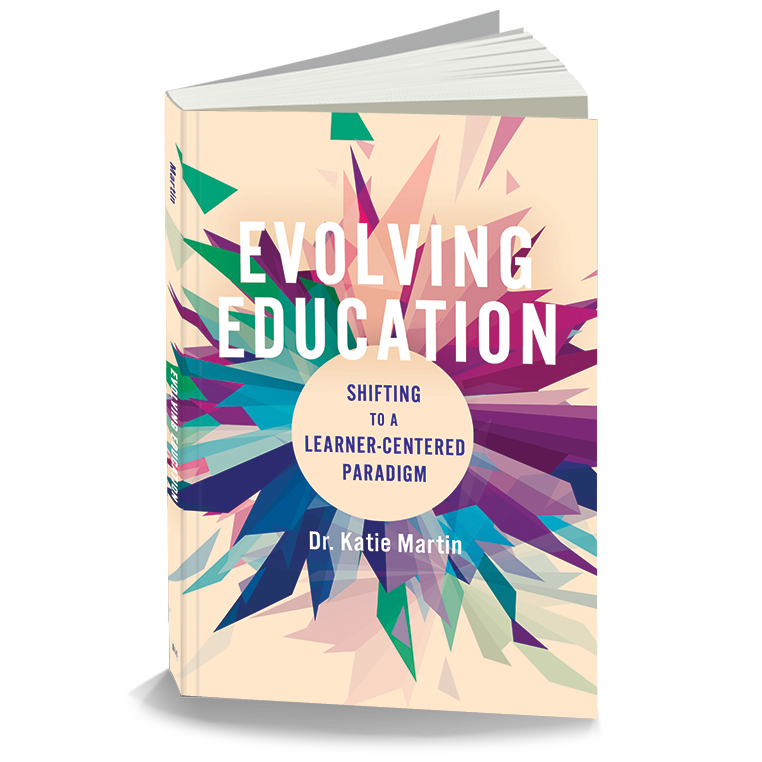I have loved seeing the excitement and the early reviews of my new book, Evolving Education that came out this week. As many are heading back to a new school this month and navigating so much change, I thought that this excerpt from the book might be helpful as you think about what to let go of, what to keep, and how to best evolve to meet the needs of the learners you serve.
Every once in a while, when am navigating change, I find myself repeating “Let It Go, Let It Goooo . . .” If you are now singing the song from Frozen, so am I. Elsa, the ice queen, exemplifies how letting go is what is needed for change.

All Change Starts with an Ending
All change starts with an ending and letting go, which is very difficult for us as humans to do. This might explain why we hold on to the binders for each new initiative or try to fit in everything we would do in a typical day, even when we have students learning from their bedrooms and we are teaching from the kitchen counter. Grief counselor William Bridges has studied how people grieve and manage transitions, and they are very similar. In his book, Managing Transitions, he highlights three stages of change: 1) endings, 2) neutral zone, and 3) new beginnings.3 As you evolve as an educator and shift practices, it is normal to go through these phases, and naming them and the emotions you feel can be helpful to let go, navigate the neutral zone, and embrace new beginnings as you manage changes in your own career.
Stage 1. Endings
Moving from school-centered to learner-centered practices, even if it aligns with your personal vision, can be hard because it requires letting go of practices that are comfortable and putting an end to the way things have always been done. This could be deciding to get rid of your seating chart, not doing the butterfly unit and giving students a choice of topics to study, or changing your grading policy. This causes uncertainty, frustration, confusion, and anger but also excitement toward a new path forward.
Stage 2. Neutral Zone
This is an opportunity for innovation and creativity, where you are imagining, planning, and unsure of what exactly will be the new normal. This is a phase of navigating between skepticism and exploration, which can cause anxiety but is also where you can dream about what is possible after you have decided to let the old way go. You might consider how students will decide where to sit, what the expectations will be, and how you will organize learning experiences where students have choices but are still able to meet learning goals. You might explore how you can assess what students have learned without a final exam or averaging all their grades for a final grade.
Stage 3. New Beginnings
New beginnings are a time of high energy—consider the beginning of every school year. Teachers go through these stages every year, saying goodbye to one class and welcoming a new one. We can do this with our practices, too. This doesn’t mean we weren’t good enough in previous years or that our practices were ineffective; it means we can decide to let go of what no longer aligns with our vision and desired goals and create new and better experiences. There is often a feeling of accomplishment when you see students sitting in various seats or pods collaborating and meaningfully engaging in learning experiences that are based on their choices and interests. There’s joy when students are able to show evidence that they have mastered the competencies connected to the defined learning goals or when your new grading system accurately reflects the evidence of what they know and can do and not just what has been completed (or not).
It’s not the change that we are often opposed to; it is the transition process that is daunting.
The loss of identity and the way of life or teaching that is comfortable, the lack of clarity in the neutral zone, and the risk of failing in a new beginning. Like any type of learning, managing change is not a linear, step-by-step process. You will go back and forth through the zones, and you may feel many emotions at the same time. Naming the process and identifying where you are can help you collaborate with others to navigate the transitions more openly and creatively.




I have begun reading your new book. It is extremely well thought out. I agree with so much of your analysis.
I like the idea of “let it go”, but so many teachers are stuck. They have invested and spent so many years working in one way that giving that up is giving up how they see themselves as teachers. I guess you are right, it is their identity. The same holds in many ways for parents and families. As we know everyone thinks they know what teaching and learning is because everyone has gone to school. I have found that even when adults know their schooling experience was bad for them, they are too connected to it. It is all they know.